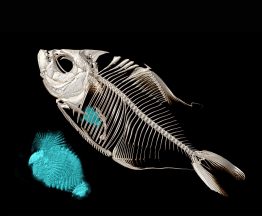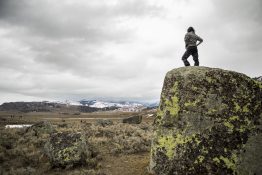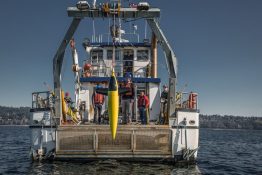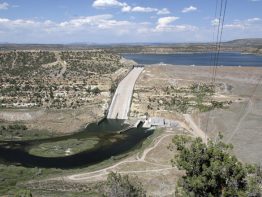A small group of fishes — possibly the world’s cleverest carnivorous grazers — feeds on the scales of other fish in the tropics. The different species’ approach differs: some ram their blunt noses into the sides of other fish to prey upon sloughed-off scales, while others open their jaws to gargantuan widths to pry scales off with their teeth. A team led by biologists at the University of Washington’s Friday Harbor Laboratories is trying to understand these scale-feeding fish and how this odd diet influences their body evolution and behavior.
Read more at UW Today »Mark Richards named as incoming UW Provost and professor of Earth and Space Sciences
The University of Washington has named Mark Richards as incoming provost and executive vice president for academic affairs. An accomplished geophysicist, Mark will hold a faculty appointment as a professor in the Department of Earth and Space Sciences, pending a vote by the UW Board of Regents. College of the Environment Dean and Mary Laird Wood Professor Lisa J. Graumlich says, “Earth scientists are trained to look for the big picture, plan for the long-term, judiciously employ data to support inference, and be nimble when intricate field research plans encounter the real world.
Read more on President Cauce's blog »A week in the wild at Yellowstone National Park
Students and professors from the College of the Environment make a classroom out of one of the world’s most closely monitored ecosystems: Yellowstone National Park.
Read more »Partnership will use robotic network to explore Antarctic ice shelves
One of the biggest unknowns for the future of Earth’s climate is Antarctica, where the West Antarctic Ice Sheet holds so much ice that, if it collapsed, it could bring several feet of rising seas. A new partnership between the University of Washington’s College of the Environment, the UW Applied Physics Laboratory and Paul G. Allen Philanthropies will use a robotic network to observe the conditions beneath a floating Antarctic ice shelf.
Read more at UW Today »Fish to benefit if large dams adopt new operating approach
Thousands of dams built along U.S. rivers and streams over the last century now provide electricity for homes, store water for agriculture and support recreation for people. But they also have downstream impacts: They reduce the amount and change the timing of flowing water that fish rely on for spawning, feeding and migration. Recognizing that many large dams are here to stay, a UW team is investigating an emerging solution to help achieve freshwater conservation goals by re-envisioning the ways in which water is released by dams.
Read more at UW Today »





